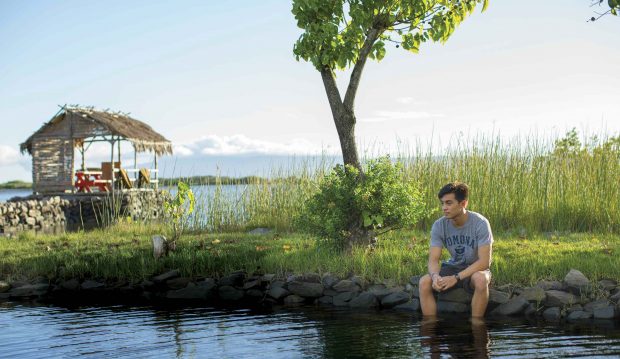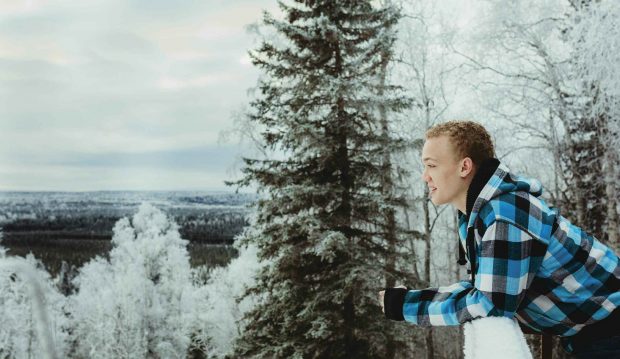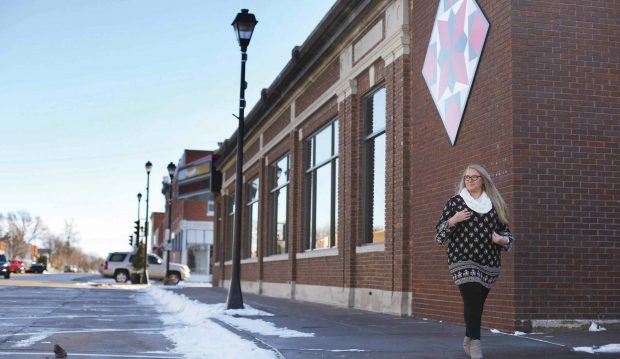Sebastian Kahale Naehu-Ramos ’21
Kaunakakai, Moloka’i, Hawaii

“I was born on another Hawaiian island, Maui, but my stepfather is from Moloka’i, so I moved there when I was 7, and that’s been home ever since. It’s a very close-knit community. You grow up knowing almost everyone. Everyone knows you; they know your parents; so everything you do is a reflection on your family. The economy is not so great. A lot of people actually sustain themselves through gathering what’s available. We have fish. We also have axis deer, though they’re not indigenous. I do some deer hunting with my dad. This photo is of one of my favorite places. It’s a fresh-water spring—what we call a pūnāwai—that my dad and his best friend restored as a nursery for baby fish. It’s really cold, but it’s nice for swimming. On the other side of the bank is a traditional fish pond—the kind we call a kuapa. It’s about 800 years old. Coming from that setting to a place like Pomona was pretty intimidating at first. I was less politically aware than most people here, so coming here was pretty eye-opening. I tell people I feel like I grew up on a rock. I’ve gotten used to California’s faster pace, but I really miss my family and Hawaiian food and being close to the ocean all the time.”
Katy Swiere ’21
Orangefield, Texas

“My community is pretty small. We have a gas station, a fire station now—that’s new—a school and a small grocery store. The lumber industry built my town, but today the main industry is the petrochemical plants along the coast of Southeast Texas and Southwest Louisiana. Most families have at least one member who works there. They call it the cancer belt because there are higher rates of cancer in the area. When I left my hometown, I was kind of like, ‘I’m never coming back here.’ You know—a very typical, small-town person who wants to get out to the big city. But then Hurricane Harvey affected my hometown in the first few weeks after I got here, and that was kind of like a slap in the face. My first thought was that my community really needed me right now, but the last thing they heard me say was, ‘I’m never coming back.’ That really made me think. And then, especially, going back home over break and seeing the destruction, but also seeing the recovery and the ways that my community was coming together and helping each other—that was just a really awesome experience. Maybe that’s not unique, but it’s very special. And I think that’s part of the strong communities these small places have. It’s just that everyone feels so connected, and even if you don’t know each other, there is this connection that you share.”
Malyq McElroy ’18
Soldotna, Alaska

“It’s kind of weird, because there’s a whole bunch of small Alaskan villages in the area, but they lump them together into cities. I live in a log cabin in the middle of the woods, roughly 10 miles outside of town, but I’m considered to live in Soldotna. A lot of the people there don’t want government or neighbors or anyone interfering with their lives, so I guess it’s not very communal. I don’t want to speak for all Alaskans, but people in my town really pride themselves on being independent—being able to hunt and fish and provide for themselves. I really didn’t do any of that—if I had, maybe I’d subscribe more to the Alaskan mentality. But I do feel like I don’t rely on things as much as maybe some other people who weren’t forced to live in that kind of environment. Along with a few Alaskan natives, my sister and I were among the only people of color in my school, so it’s been a big contrast coming here to Pomona. But my experience is so different from that of most other people of color here that at first it was kind of uncomfortable. I’m still not a very social person, so I don’t really participate in a lot of things, but I’ve become more acclimated. When I go back home, I enjoy seeing my family and knowing who everyone is when I go to the grocery store, but I don’t think I would want to go back there permanently.”
Alyson Smock ’20
Cozad, Nebraska

“Cozad is a town of 4,000 people, give or take a few. The last census was around 2010, and I’m sure we’ve lost folks since then. I was born and raised there. Both of my parents were born and raised there, and their parents came there from other places in Nebraska. It’s a pretty stereotypical small, rural town in the Midwest. The nearest Walmart is in the next town over, so you have to drive like 15 minutes on the interstate to get there. The nearest mall’s even farther than that—an hour away. But it’s a place worth visiting. I ask my friends all the time—sometimes jokingly, sometimes seriously—if they ever want to come visit me in Nebraska, and usually the answer’s no. But it’s a place where people who don’t know you make you feel welcome. If you’ve never been to rural, small-town America, it’s an experience you need to have at least once in your life. I personally prefer small-town living to living here next to L.A, and I often think about going back after getting my law degree. The pace is slower. When you think of California, you think of it being laid back. You think of surfer dudes—or at least I do—and beaches and just a cool, chill pace. But the real slow pace is in rural America, where people aren’t in a hurry to get from place to place. They’re enjoying the day; they’re enjoying talking with people they run into on the street, or when they come into their businesses. They’re catching up. That’s probably one of my favorite parts about small-town living.”
